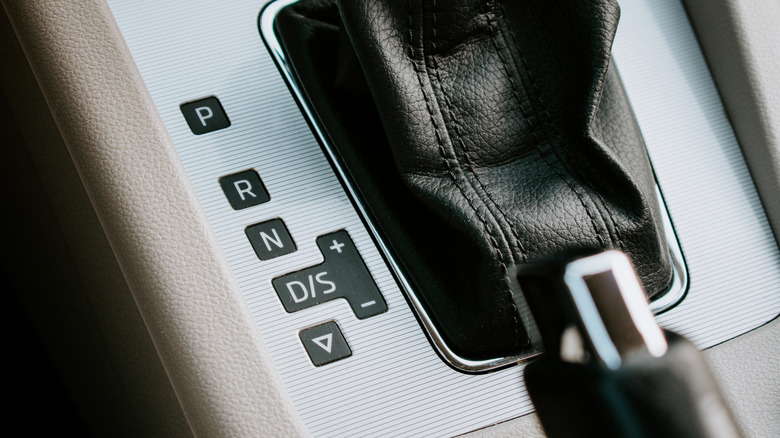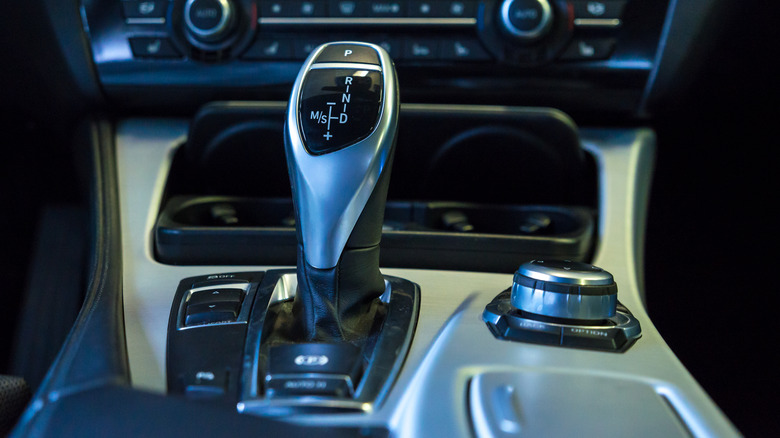How Does An Automatic Car's Manual Mode Actually Work?
Automatic transmissions are pretty self-explanatory, and for the most part, fairly foolproof. Most of us will be familiar with the usual settings found on an automatic shifter, with P, R, N, and D being the typical functions. As you likely already know, D stands for drive, P for park, R for reverse, and N for neutral.
However, many auto shifters now also sport plus and minus signs, which can be accessed in a similar way to the typical and aforementioned modes. These indicate you can manually shift up and down gears, although you may need to slide the shifter into an M or S mode — manual or sport — in order to access this function.
How it actually works is that, by selecting the car's manual mode and shifting between the gears yourself, this overrides the automatic transmission's typical pattern of when to change gears. For example, the transmission may typically choose sixth gear when cruising at 60 mph, but you can override this behaviour by manually dictating the transmission to be in fifth, or fourth gear.
The exact way to manually shift gears in an automatic car will vary from vehicle to vehicle, but doing so will enable you to mimic the behaviour of a manual car, by shifting up and down the gears on demand. This can be great for anyone who's intrigued as to what driving a manual car might feel like, or if you're a beginner learning to shift gears manually.
When you might be tempted to use your automatic car's manual mode
Have you ever tried pulling onto a fast moving road, such as a busy highway, and felt your car was just too sluggish in the selected gear? Dropping a gear or two to increase the revs can give you the ability to build speed quicker, which is something that comes naturally to those that drive manual cars. While most automatic transmissions do have a kick-down feature, which will drop the gears when you stamp on the gas pedal, flicking into manual mode will also allow you to drop a gear or two.
In contrast, you might be cruising along at the speed limit, and find you're just hovering below the rpm in which your car would change up a gear, meaning the revs are a little higher than you'd like. Driving at higher revs is not only louder, but it can also worsen fuel economy, so switching into manual mode and flicking up a gear could make sense here too, as one of the ways to avoid wasting fuel when driving.
Limitations of an automatic transmission's manual mode
While you can flick into a higher or lower gear on demand when using the manual mode on an auto, the car might not necessarily hold this gear for as long as you'd like. For example, if you're driving fairly slowly, and try to switch into a particularly high gear, the transmission may switch back down a gear in order to stop the engine from stalling or lugging due to lower revs. This is also true the other way around — the car may switch up a gear if your revs are particularly high when driving in a lower gear.
This doesn't happen in a manual car, manual cars would simply stall if you're in a gear that's too high, or bounce off of the rev limiter if you're in a gear which is too low — a bad habit that will quickly ruin your engine. The difference here is that manual drivers have total control over the selected gear. One benefit to using manual mode in an automatic is that the transmission usually won't allow you to stall the car, which can be dangerous. Plus, the whole process is a lot simpler, with no need to depress a clutch while changing gears — just engage manual mode and flick through the gears using your shifter.


